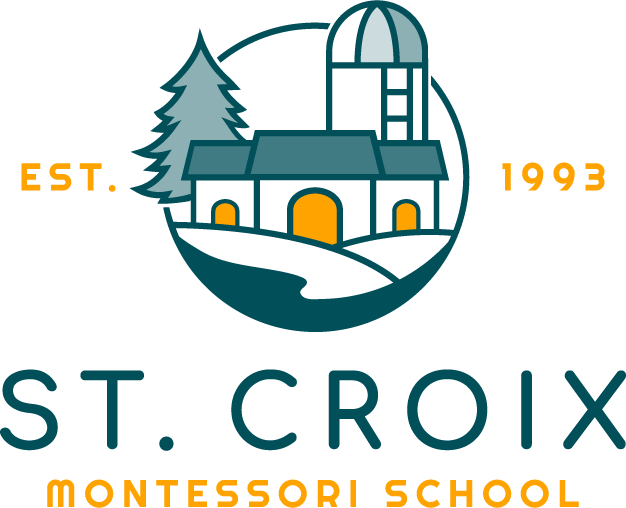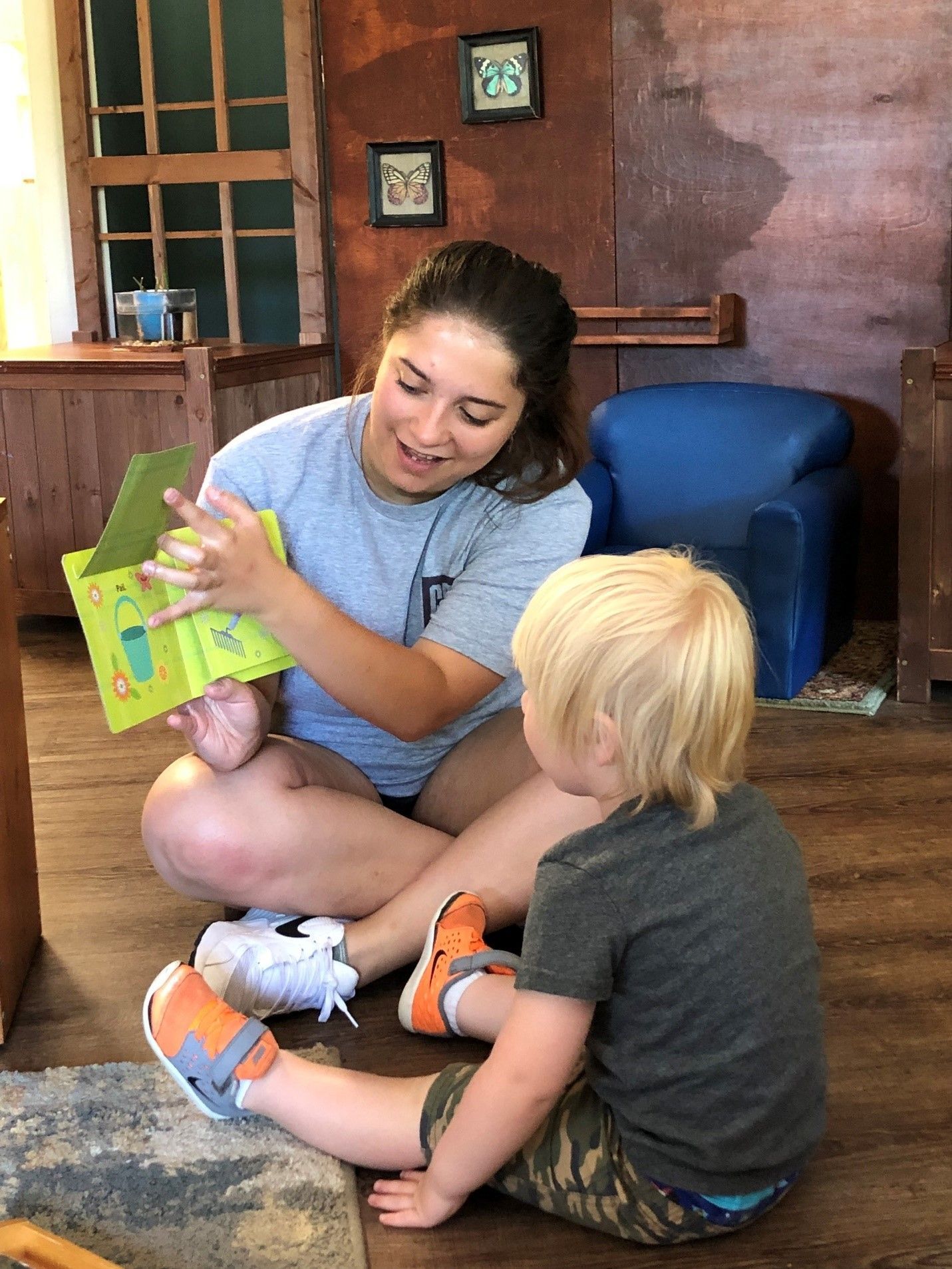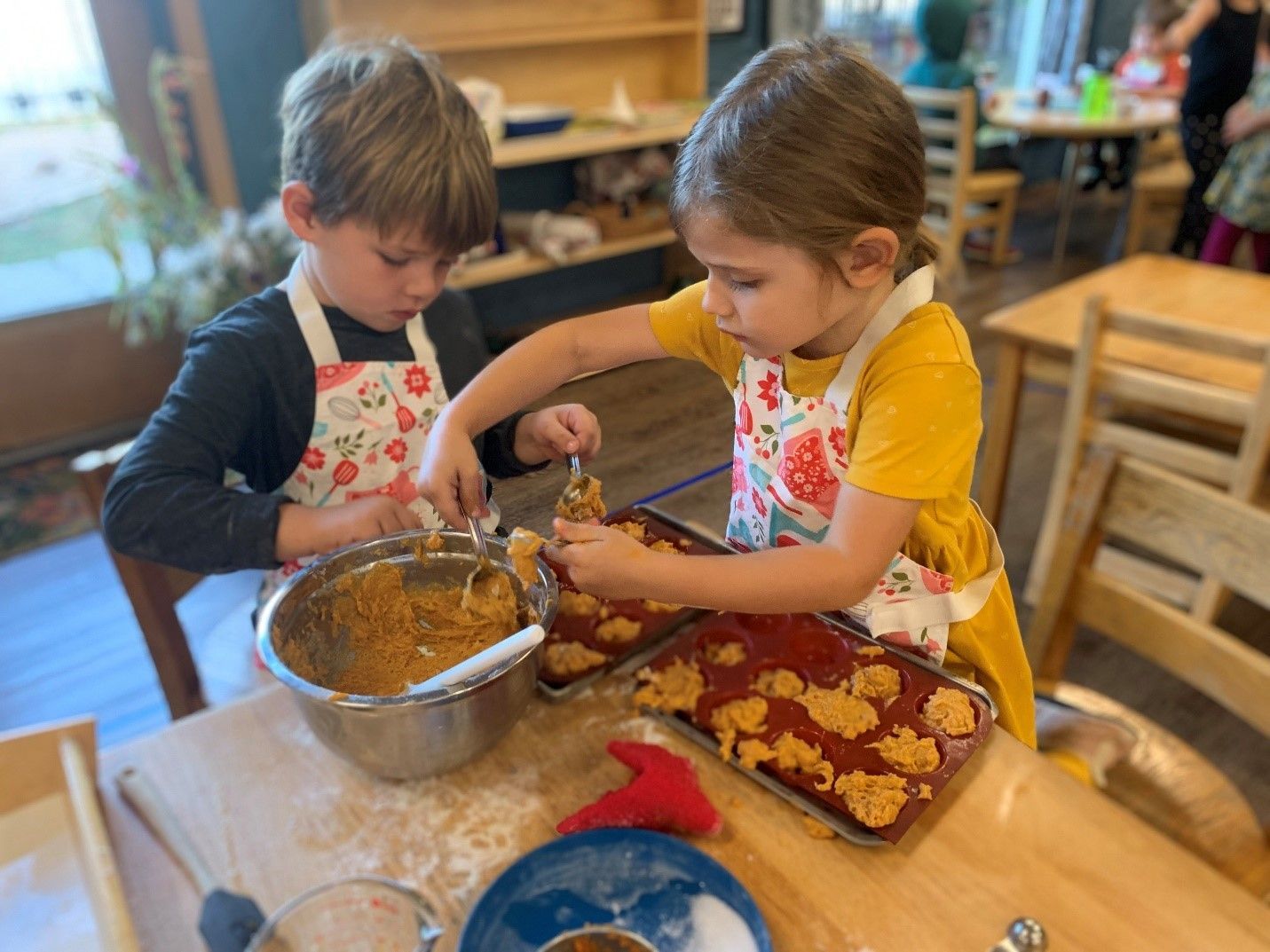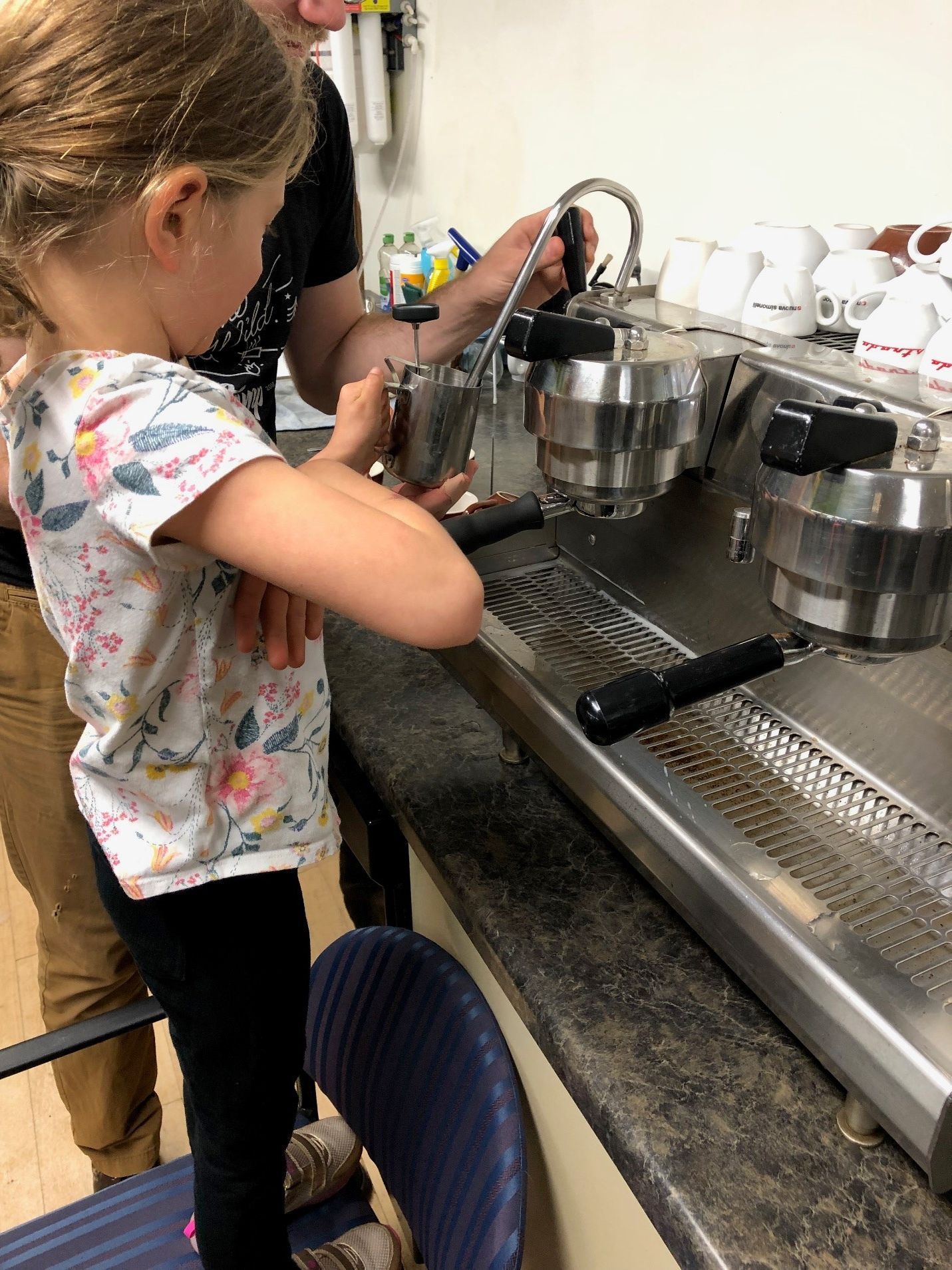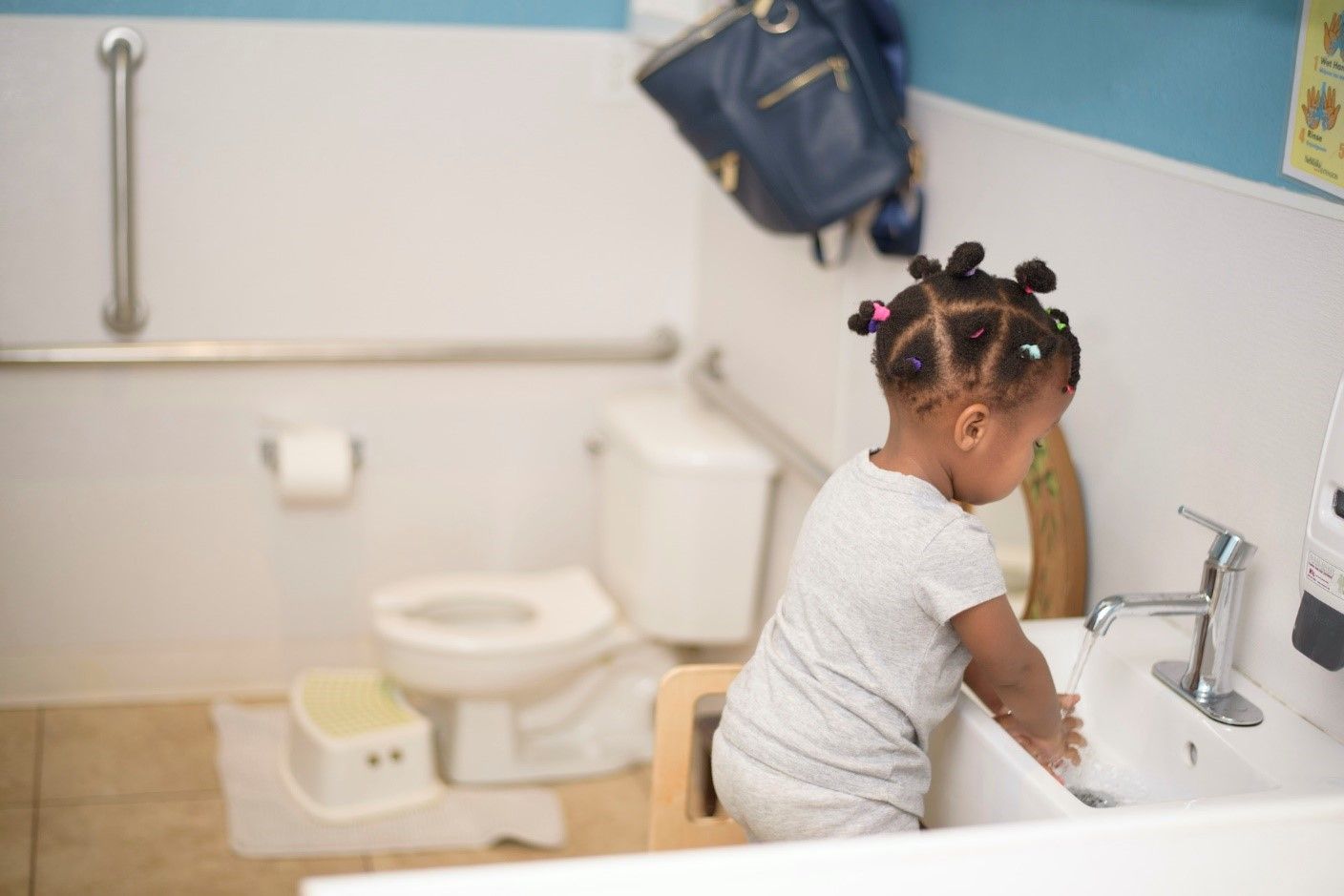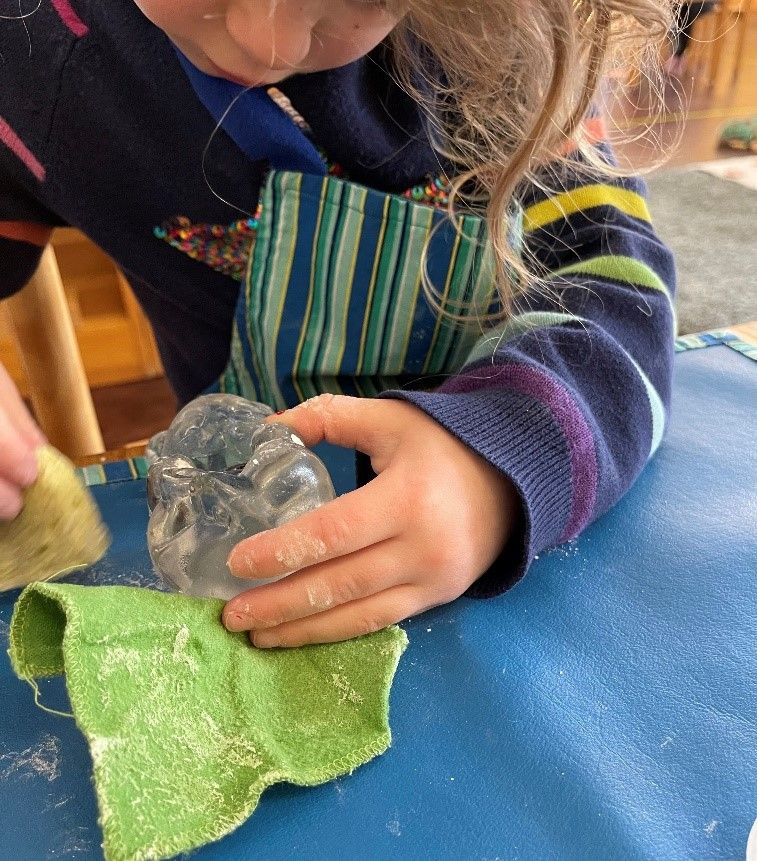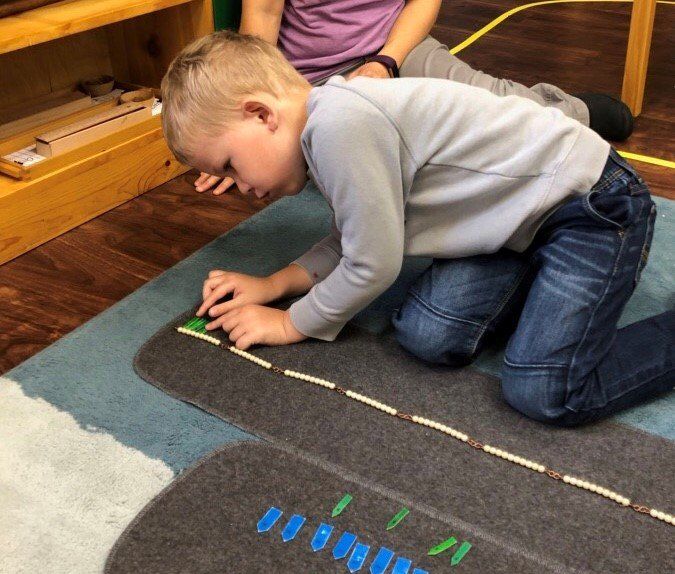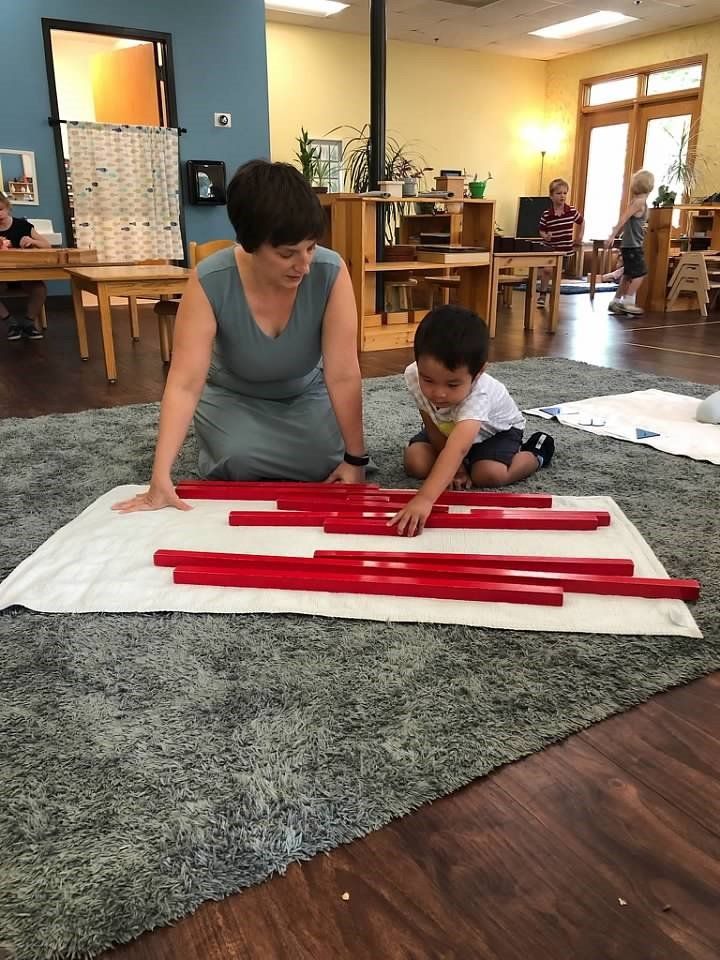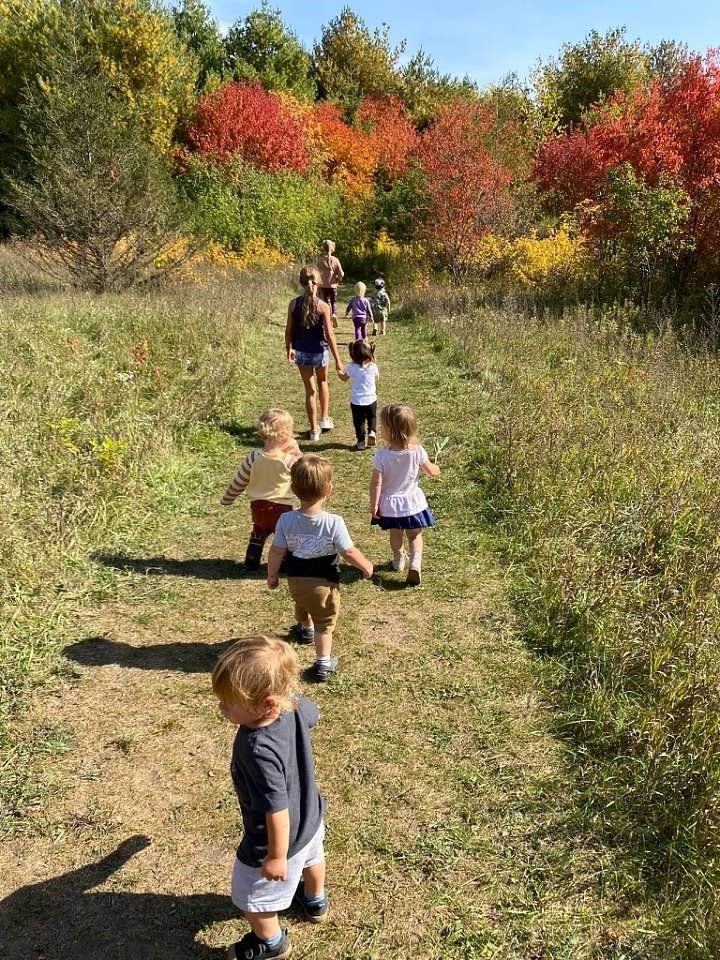Blog Layout
Work or Play? A Peek Inside the Montessori Classroom
St. Croix Montessori School • September 17, 2021
You may have heard that Montessori classrooms are different than most. You’ve heard the rumors: children run around doing whatever they please. It’s all play and no work. Or perhaps you’ve heard the opposite: our structures are so rigid we stifle creativity and natural childhood behavior.
What’s it really like?
We can practically guarantee that once you step inside a classroom for yourself, sit quietly in a corner, and observe the children and adults at work, your impressions will be transformed. We hope you’ll scheduled a visit soon if you’ve never been, or even if it’s just been a while.
In the meantime, this post will give you some idea of what you might see in a typical, high fidelity Montessori classroom.
Arrival
From the moment they step in the door, expectations are different for Montessori children, even as young as our toddlers. Children are responsible for hanging their own bags and coats on hooks. They learn to change their own shoes, with most classrooms requiring that children wear a special pair of shoes designated for indoor use only. This is done in part to keep our classrooms clean, but also to give children a sense that their classroom feels more comfortable and home-like.
Teachers (Guides) greet children upon their arrival. They make a point of acknowledging each child’s importance by looking them in the eye and saying their name along with a friendly hello. By doing this, we are intentionally modeling polite human interactions. Before long, the children learn how to greet us back, and they are even able to apply this skill outside of school.
The Work Period
Also called the morning work cycle, this period of time is a hallmark of the Montessori approach. We believe that children need a longer stretch of time to involve themselves deeply in independent work, so we honor this need by providing an uninterrupted block of time each morning.
How much time? That depends on the age of the child. Typically, for children ages 3 and up, the work period is three hours long while our toddlers have a two-hour long work cycle. Older children have a second work period in the afternoon.
During this time children work independently while guides give small group or independent lessons. Sometimes it may appear that a child is playing, and while that is true, certain types of play are critical to learning. It is also important to note that Dr. Montessori developed her educational materials to appeal to children, so what may look like a simple puzzle could actually be a manipulative biology diagram. What looks like pretty colored beads are, in fact, tools for exploring complex mathematical concepts.
Montessori children are able to make a lot of choices during this time. We allow freedom of movement: that is, they may sit where they like, stand and walk around the room if their bodies require a break, and use the restroom safely without needing an adult’s permission. We provide a range of seating options as well. Some children prefer to work alone or with others, some like to sit at a table or on the floor. Adults appreciate having choices while they work, and we believe children should be afforded the same respect.
● Math
● Language
● Biology
● Geography
● Practical life skills
● Sensory refinement (up to age 6)
● Geometry
Socializing
Montessori education takes the perspective that we must nurture the whole child. This is a popular concept with parents and teachers across a wide variety of settings, but Montessori schools have structures built into their programs that allow for deeper exploration and support of the social self.
The aspects of choice are one way we support children’s social development. Rather than assigning seats or requiring children to work alone or in pairings that are predetermined by adults, we generally let children choose if they would rather work independently or cooperatively, and with whom they would like to work. That being said, in any group of people, some personalities work well together, while others do not; we help guide children to differentiate between what makes a positive complementary work partner for them, and what constitutes a fun (and perhaps silly) friendship that can be developed outside the work period.
As children grow older, they begin to place a stronger emphasis on friendships. The process of figuring out what healthy friendships should look and feel like is a major work of children in the elementary years. Attachments form, and children come to rely on the company of one another. Of course, another reality of these years is that all children will face social conflict at some point or another.
One benefit of a Montessori environment is that the guides are able to set aside time and space to help children navigate conflict. We teach mediation strategies, inclusivity, and conflict resolution. We are able to assist children both proactively and reactively. We often use stories to teach children important lessons about social skills. Role play is another tool used in classrooms when negative patterns begin to form; when children are able to have fun and remove themselves personally from an experience, they can learn positive approaches to resolving common dilemmas.
The Guide’s Role
Another often surprising element of the Montessori classroom is the role our guides take. To begin with, they are typically referred to as guides, rather than teachers, as we believe the name is a far better descriptor of the task. Instead of feeding children a stream of information we expect them to internalize, we lay a path before them, open the door, and give them the tools to explore and learn.
In the primary years (ages 3-6), lessons are usually given individually. This allows the guide to give their full attention to the child before them, and to honor their individual needs. In the elementary years, lessons are typically given to small groups of children, honoring their developmental desire to work alongside their peers.
Another delicate task of the Montessori guide is to know when to step in and assist a child, and when to stand back and allow them to find a solution themselves. Generally speaking, we tend to take the latter approach. We believe that children are capable of much more than we often give them credit for, and given the opportunity, they will rise to the occasion. This approach helps build resilience and confidence.
Lastly, the guide’s job is to observe. We watch the children in our care to learn which skills they have mastered, which they are progressing in, and which they may require additional support with. Though we may not always intervene, we notice what they are doing, both academically and socially. We take time to observe the children to inform our practice, record their progress, and to share our findings with parents.
Montessori guides don’t consider themselves the center of the classroom. We are merely there to support the learning of the children.
Still curious? Good! Call us today to schedule a time to observe. See a Montessori classroom in action for yourself. We know it will be an amazing experience.
What’s it really like?
We can practically guarantee that once you step inside a classroom for yourself, sit quietly in a corner, and observe the children and adults at work, your impressions will be transformed. We hope you’ll scheduled a visit soon if you’ve never been, or even if it’s just been a while.
In the meantime, this post will give you some idea of what you might see in a typical, high fidelity Montessori classroom.
Arrival
From the moment they step in the door, expectations are different for Montessori children, even as young as our toddlers. Children are responsible for hanging their own bags and coats on hooks. They learn to change their own shoes, with most classrooms requiring that children wear a special pair of shoes designated for indoor use only. This is done in part to keep our classrooms clean, but also to give children a sense that their classroom feels more comfortable and home-like.
Teachers (Guides) greet children upon their arrival. They make a point of acknowledging each child’s importance by looking them in the eye and saying their name along with a friendly hello. By doing this, we are intentionally modeling polite human interactions. Before long, the children learn how to greet us back, and they are even able to apply this skill outside of school.
The Work Period
Also called the morning work cycle, this period of time is a hallmark of the Montessori approach. We believe that children need a longer stretch of time to involve themselves deeply in independent work, so we honor this need by providing an uninterrupted block of time each morning.
How much time? That depends on the age of the child. Typically, for children ages 3 and up, the work period is three hours long while our toddlers have a two-hour long work cycle. Older children have a second work period in the afternoon.
During this time children work independently while guides give small group or independent lessons. Sometimes it may appear that a child is playing, and while that is true, certain types of play are critical to learning. It is also important to note that Dr. Montessori developed her educational materials to appeal to children, so what may look like a simple puzzle could actually be a manipulative biology diagram. What looks like pretty colored beads are, in fact, tools for exploring complex mathematical concepts.
Montessori children are able to make a lot of choices during this time. We allow freedom of movement: that is, they may sit where they like, stand and walk around the room if their bodies require a break, and use the restroom safely without needing an adult’s permission. We provide a range of seating options as well. Some children prefer to work alone or with others, some like to sit at a table or on the floor. Adults appreciate having choices while they work, and we believe children should be afforded the same respect.
What types of work might you see? You may be surprised to see even very young children working on the following subjects:
● Language
● Biology
● Geography
● Practical life skills
● Sensory refinement (up to age 6)
● Geometry
Socializing
Montessori education takes the perspective that we must nurture the whole child. This is a popular concept with parents and teachers across a wide variety of settings, but Montessori schools have structures built into their programs that allow for deeper exploration and support of the social self.
The aspects of choice are one way we support children’s social development. Rather than assigning seats or requiring children to work alone or in pairings that are predetermined by adults, we generally let children choose if they would rather work independently or cooperatively, and with whom they would like to work. That being said, in any group of people, some personalities work well together, while others do not; we help guide children to differentiate between what makes a positive complementary work partner for them, and what constitutes a fun (and perhaps silly) friendship that can be developed outside the work period.
As children grow older, they begin to place a stronger emphasis on friendships. The process of figuring out what healthy friendships should look and feel like is a major work of children in the elementary years. Attachments form, and children come to rely on the company of one another. Of course, another reality of these years is that all children will face social conflict at some point or another.
One benefit of a Montessori environment is that the guides are able to set aside time and space to help children navigate conflict. We teach mediation strategies, inclusivity, and conflict resolution. We are able to assist children both proactively and reactively. We often use stories to teach children important lessons about social skills. Role play is another tool used in classrooms when negative patterns begin to form; when children are able to have fun and remove themselves personally from an experience, they can learn positive approaches to resolving common dilemmas.
The Guide’s Role
Another often surprising element of the Montessori classroom is the role our guides take. To begin with, they are typically referred to as guides, rather than teachers, as we believe the name is a far better descriptor of the task. Instead of feeding children a stream of information we expect them to internalize, we lay a path before them, open the door, and give them the tools to explore and learn.
In the primary years (ages 3-6), lessons are usually given individually. This allows the guide to give their full attention to the child before them, and to honor their individual needs. In the elementary years, lessons are typically given to small groups of children, honoring their developmental desire to work alongside their peers.
Another delicate task of the Montessori guide is to know when to step in and assist a child, and when to stand back and allow them to find a solution themselves. Generally speaking, we tend to take the latter approach. We believe that children are capable of much more than we often give them credit for, and given the opportunity, they will rise to the occasion. This approach helps build resilience and confidence.
Lastly, the guide’s job is to observe. We watch the children in our care to learn which skills they have mastered, which they are progressing in, and which they may require additional support with. Though we may not always intervene, we notice what they are doing, both academically and socially. We take time to observe the children to inform our practice, record their progress, and to share our findings with parents.
Montessori guides don’t consider themselves the center of the classroom. We are merely there to support the learning of the children.
Still curious? Good! Call us today to schedule a time to observe. See a Montessori classroom in action for yourself. We know it will be an amazing experience.
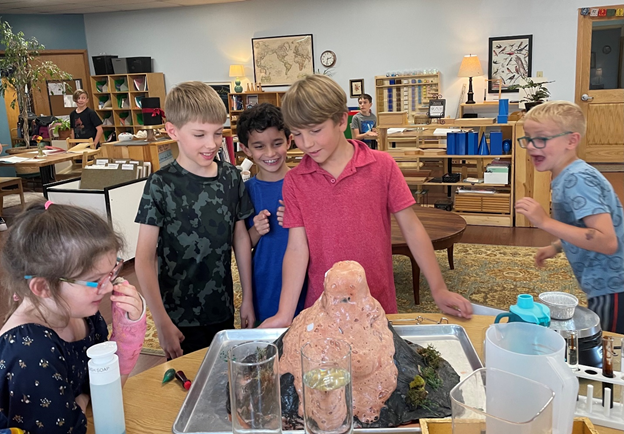
By St. Croix Montessori School
•
October 10, 2022
When children enter a Montessori elementary classroom around age six, they have undergone a great transformation. Whereas they previously wanted and needed to explore their immediate environment on a sensorial level, now they want and need to explore by using their intellect and imagination. The study of geography takes on a whole new meaning at this age when children are fascinated by the smallest particles and the largest stars. They want to know why the seasons differ in the Northern and Southern Hemispheres. They are curious about what made the Grand Canyon. They want to know why ocean currents affect the weather. This desire to know why propels children to discover relationships and functions, not just learn facts. They are also fascinated by the extreme and the outstanding. They are drawn to the very large and the very small. They ask Why? What for? How is this related? The Universe Elementary-age children have a consuming interest in everything! To cater to this all-embracing thirst for the reasons of everything, we begin with the universe. One of the earliest lessons we introduce is the story of the universe. From this first story, children are delighted by a myriad of lessons and activities which fall under the general heading of ‘geography.' Beginning with the universe gives elementary children a big-picture context. In Montessori, rather than encountering bits of disconnected knowledge, children learn about the order and harmony of the universe, as well as the relationships that exist between all things. “If the idea of the universe be presented to the child in the right way, it will do more for him than just arouse his interest, for it will create in him admiration and wonder, a feeling loftier than any interest and more satisfying. The child's mind then will become fixed and can work. The knowledge he then acquires is organized and systematic; his intelligence becomes whole and complete because of the vision of the whole that has been presented to him and his interest spreads to all, for all are linked and have their place in the universe on which his mind is centered.” — Dr. Maria Montessori, To Educate the Human Potential. Constructing Understanding Dr. Montessori observed that children around the world tended to ask similar questions at this age. The geography presentations and lessons support these fundamental reoccurring questions. Our goal is to help elementary children have an explosion into understanding. However, this kind of understanding does not come from adults explaining everything. Instead, we give children experiences and just enough information so they can find out more and make associations. When children make their own connections, real and lasting understanding happens. Even better, the children respond with enthusiasm and excitement! Geography Topics Children in a Montessori classroom do not encounter subjects grouped under curricular headings. Subjects are integrated because children are building their minds. They are exploring their world, rather than the chapters of a textbook. Although there is a structure in the classroom environment, children have the opportunity to explore different many different aspects of geography including: Space, Earth, and the Universe Composition of the Earth Nature of the Elements Sun and Earth Work of Air Work of Water Life on the Land Interdependencies Economic Geography The lessons we present, and the resulting children’s explorations, lead into astronomy, physics, chemistry, meteorology, geology, and more. For example, as we look more closely at how the earth revolves around the sun, children learn about solstices and seasons, climatic zones, and flora and fauna found in particular regions. Aids to Understanding For each topic, we provide imaginative aids, often in the form of stories, colorful impressive charts, and a variety of experiments. Many of these instructive aids have been selected to provide impressions, not just facts. The aim of our geography presentations is to intrigue the children and spark their imagination. We want them to be inspired to find out more! We concentrate on giving key information, discussing reasons, and illustrating details, all of which draw children’s attention to certain phenomena. Once interest is there, children want to learn as much as they can. It is as if we are giving elementary students keys to knowledge and understanding. Once they have the keys, they can open doors and continue their explorations. Geography is a vibrant aspect of the Montessori elementary and generates spontaneous, active, self-renewing interest! A love of learning blossoms in the children, and many develop a lifelong fascination with elements of geography. We invite you to visit our school to learn more about our Montessori approach to Elementary Education.
PROGRAMS
© 2025
St. Croix Montessori School
© 2025
Nido Montessori School
